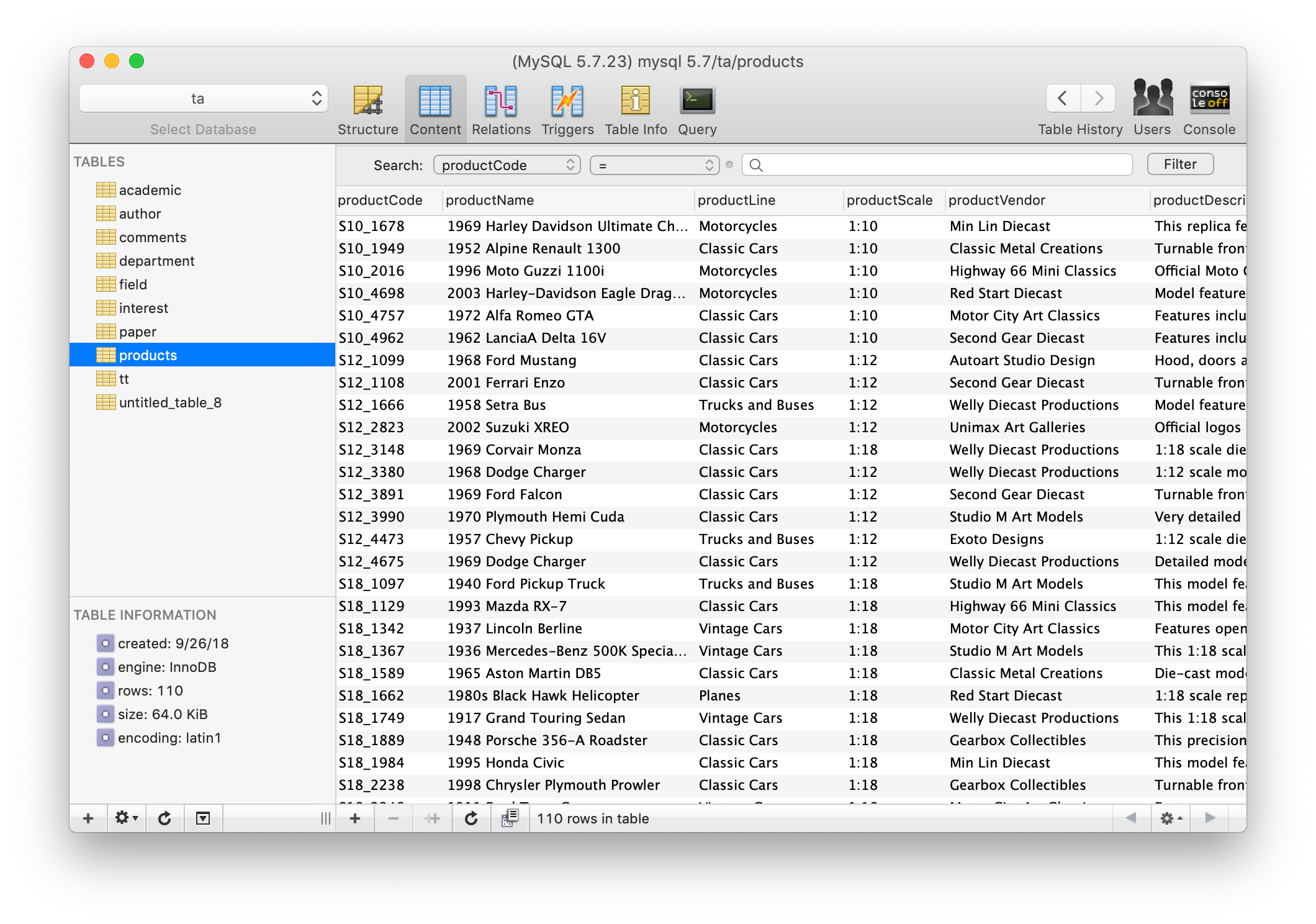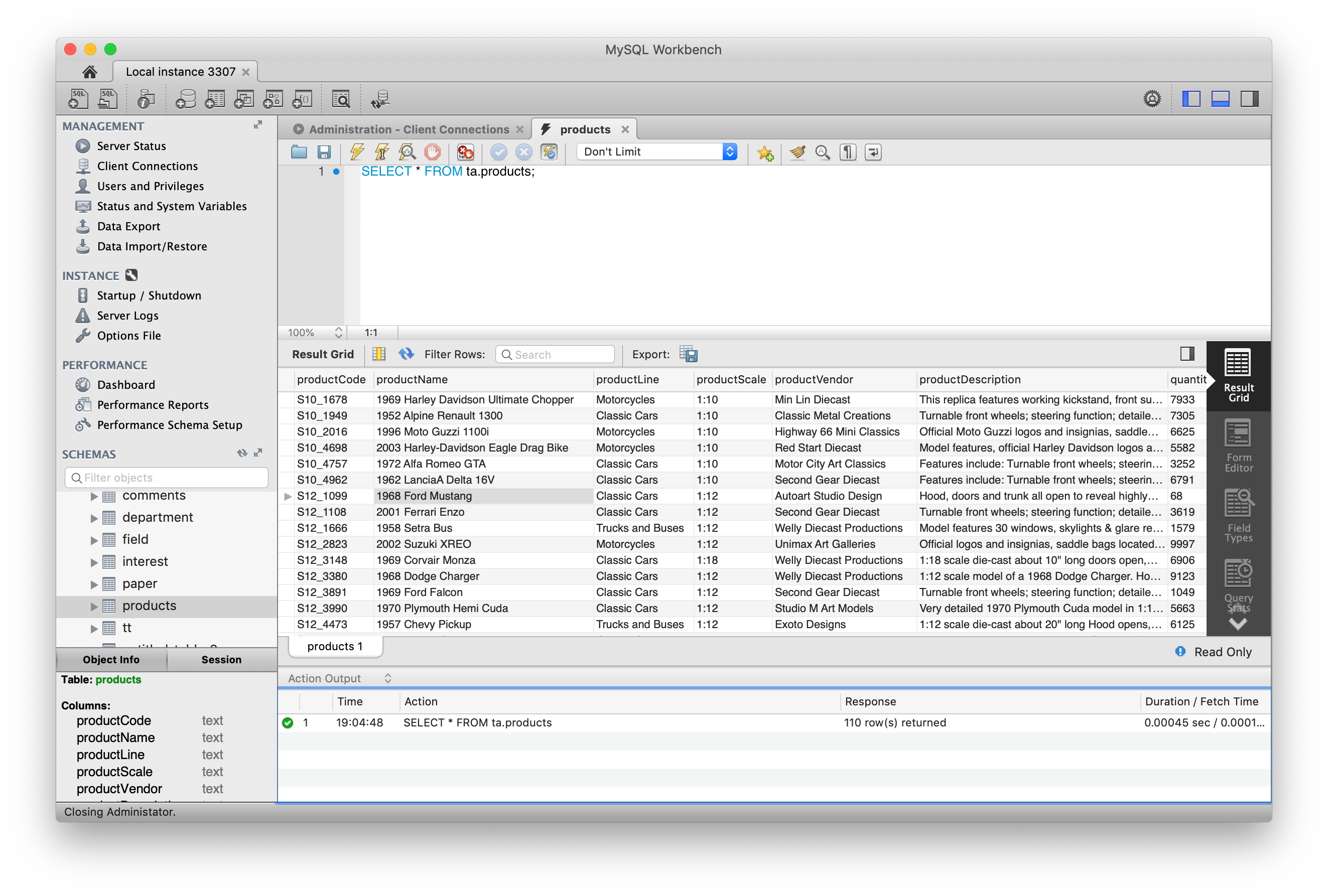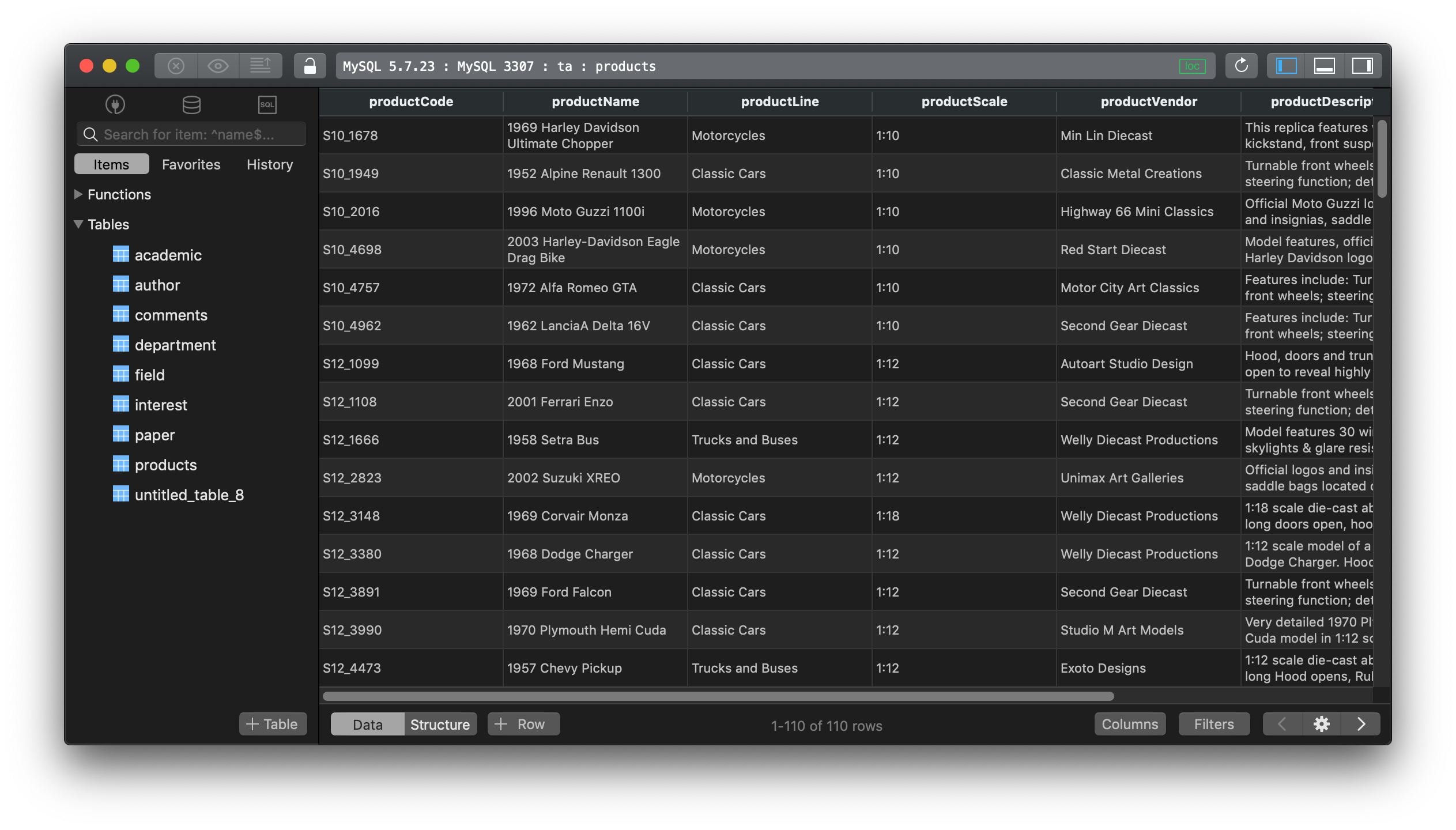Sequel Pro vs MySQL Workbench vs TablePlus
In this post, we are going to discuss the differences between Sequel Pro, MySQL Workbench, TablePlus, as well as the pros and cons of each tool, to see which one will be better suited for your MySQL management tasks.
1. Sequel Pro
Sequel Pro had been long known for being one of the best GUI tools for MySQL, only until it started having compatibility issues with MySQL 8 and macOS Mojave.
-
Supported Platforms: Sequel Pro is available on macOS only.
-
Supported Drivers: Sequel Pro only supports MySQL. It works well with MySQL up to 5.7. Since the recent MySQL 8.0 came out, it’s reported that Sequel Pro can’t connect to MySQL 8.0, it’s not working properly or just crashing.
-
Pricing: Sequel Pro is free and open source. It also accepts donation.

Pros:
- Very clean and simple interface. It’s easy for newbies to get started.
- It runs fast.
- Easy to import/export databases.
- Connections over SSH
- Full user management, credentials, and roles
- Filtering/Sorting data based on single constraint including equal to/in/like/between etc.
- Sanity check or data integrity check.
- It’s free
Cons:
- Crashes very often and randomly. This is a big problem in the current (2016 to present) version of Sequel Pro.
- Available for Mac only. The development is stopped now.
2. MySQL Workbench
MySQL WorkBench offers a full-featured administration tool for MySQL on multiple operating systems.
-
Supported platforms: MySQL Workbench is cross-platform. From can find its versions for Mac, Windows, and Linux.
-
Supported Drivers: As the name states it, MySQL Workbench only works with MySQL.
-
Pricing: MySQL Workbench also has a community version which is free and open source. The other two commercial versions for enterprises are subscription based with enterprise features and support.

Pros:
- It’s cross-platform.
- It includes everything a data modeler needs for creating complex ER models
- It has a Visual Performance Dashboard
- A complete and easy to use tool for database migration.
- It provides fast access to server status and other information.
Cons:
- It only supports MySQL and MariaDB. If you work with more database other than MySQL and MariaDB, it’s a huge limitation.
- It complicated and overkill to perform simple tasks.
- It’s resource intensive.
- It crashes a lot too.
3. TablePlus
With a native build and a lightweight size, TablePlus offers a fast and easy solution for managing multiple databases.
-
Supported platforms: TablePlus is built native for each platform. It started out with a native version for Mac, then another version for Windows, and a version for Linux was introduced recently as an alpha release. It also has an iOS version.
-
Supported Drivers: TablePlus supports a handful of relational databases: MySQL, PostgreSQL, SQLite, Microsoft SQL Server, Amazon Redshift, MariaDB, CockroachDB, Vertica, Oracle; and two popular NoSQL databases: Cassandra and Redis.
-
Pricing: TablePlus has a free version with full set of features which you can download and use forever, but there are some usage limitations. If you use it heavily, the license costs $59 to remove all those limitations.

Pros:
- Native build for each platform so it’s fast, lightweight, and stable.
- Clean and simple interface.
- Multiple drivers support
- Multiple conditions data filter
- Queries history and keyword binding favorite.
- Streaming results and async loading to show queries results faster and doesn’t block the UI.
- Very quick inline editing for table data and structure, you also can edit query results directly.
- Smart query editor with highlight syntax, instant autocomplete, SQL reformat.
- A plugin system to extend the app.
- Quick support. TablePlus releases new updates regularly and responds to users’ requests almost immediately.
Cons:
It currently lacks of some advanced features such as ER Diagram, database compare tool to Diff and Sync, etc.
Conclusion
Go with MySQL Workbench if you:
- Work with MySQL only
- Need a tool that is feature rich
Go with Sequel Pro if you:
- Um. It’s dead. Just move on.
Go with TablePlus if you:
- Are a fan of native experience
- Work with multiple databases
- Want a modern design with better usability
- Want quick support & development cycle.